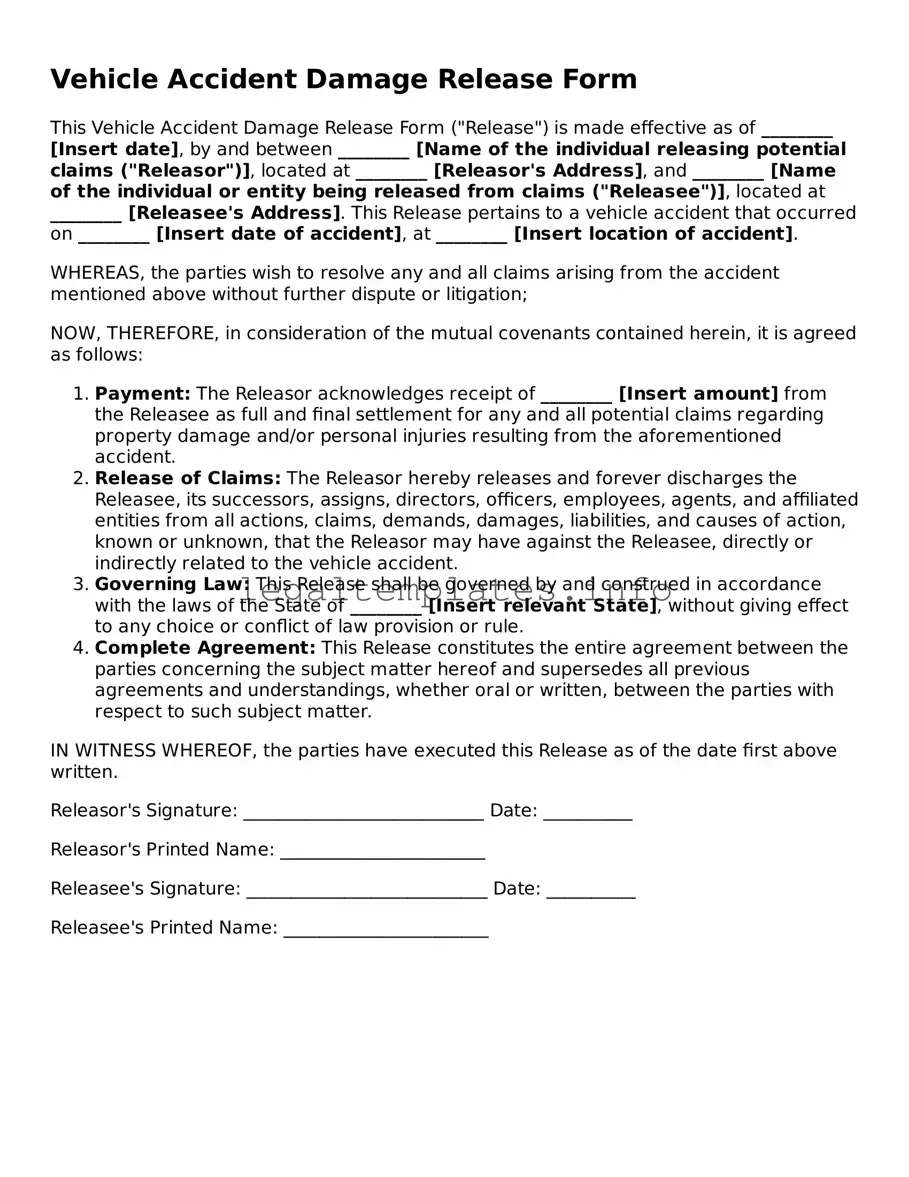What is a Vehicle Accident Damage Release form?
A Vehicle Accident Damage Release form is a document that confirms an agreement has been reached between the parties involved in a vehicle accident regarding the compensation for damages. When signed, it releases the party at fault from further liabilities once the agreed-upon compensation is provided. This form is crucial in ensuring both parties agree to the settlement terms, preventing future disputes over the same incident.
When should I use a Vehicle Accident Damage Release form?
This form should be used after a vehicle accident, once all parties have agreed on a compensation amount for the damages incurred. It is important to sign this form before any compensation is exchanged. This ensures that the agreement is legally binding and protects both parties from potential future claims.
What information is needed to fill out this form?
The form requires detailed information from both parties involved in the accident, including their names, addresses, and contact information, along with the specifics of the vehicle(s) involved. It also needs a detailed account of the accident and the damages, the compensation amount agreed upon, and the date of the agreement. Both parties’ signatures are also necessary for the form to be considered complete and legally binding.
Do I need a witness or notary for the Vehicle Accident Damage Release form?
While having a witness or notarizing the form is not always legally required, it is highly recommended. A witness or notarized signature adds an extra layer of verification and legitimacy to the agreement, potentially providing additional protection should the agreement be questioned in the future.
Can I change the agreement after the form is signed?
Once the Vehicle Accident Damage Release form is signed by both parties, the agreement is considered legally binding, and changes cannot be made unless both parties agree to amend the document. Any amendments should be made in writing and attached to the original agreement, with signatures from both parties.
What if the other party does not fulfill the agreement after signing the form?
If one party fails to provide the agreed-upon compensation after the form is signed, the other party has the right to take legal action to enforce the agreement. The signed form serves as a legally binding contract, and the courts can be used to resolve such disputes and ensure compliance with the terms agreed upon.
Is the form valid in all states?
While the general concept of a Vehicle Accident Damage Release form is recognized in most states, specific requirements may vary. It's important to check with your local state’s regulations or consult with a lawyer to ensure that the form complies with local laws and requirements.
Can I fill out this form without a lawyer?
Yes, you can fill out this form without legal assistance, but it is advisable to consult with a lawyer to ensure that all aspects of the agreement are fair, comprehensive, and legally valid, especially if substantial damages or compensation are involved.
Does signing this form affect my insurance claim?
Signing a Vehicle Accident Damage Release form might affect your insurance claim, depending on the terms of your insurance policy. It is advisable to consult with your insurance provider before signing the form to ensure that it does not violate the terms of your policy or affect your ability to claim insurance benefits.
Where can I obtain a Vehicle Accident Damage Release form?
You can obtain a Vehicle Accident Damage Release form from legal document websites, some law offices, insurance companies, or by consulting with a personal injury or vehicle accident lawyer who can provide you with the form and advise on how to properly fill it out.
